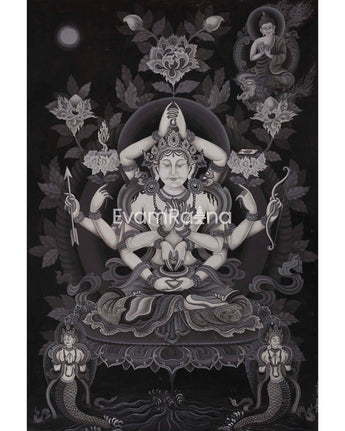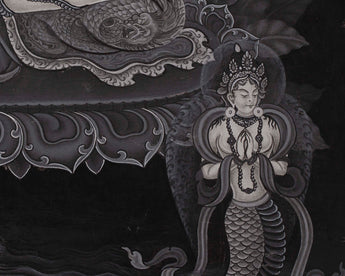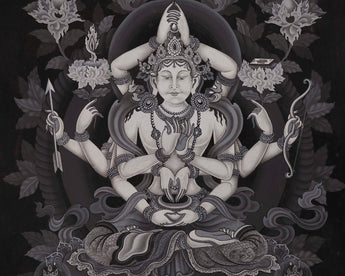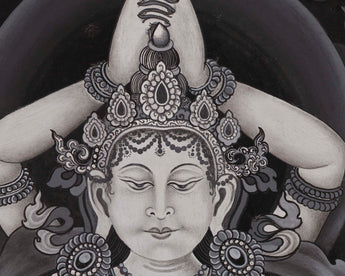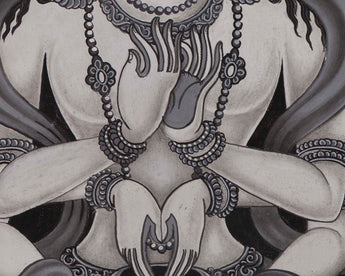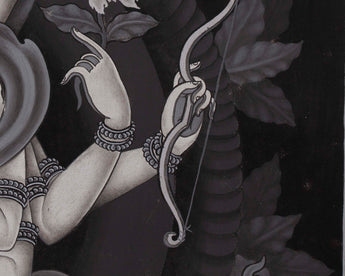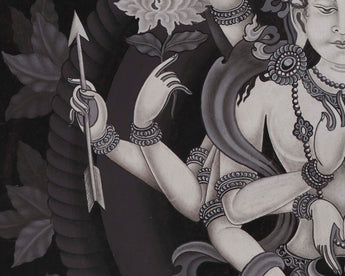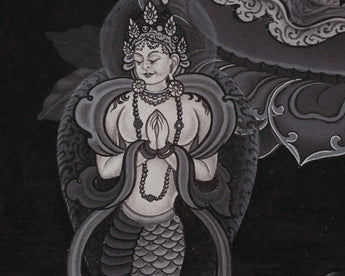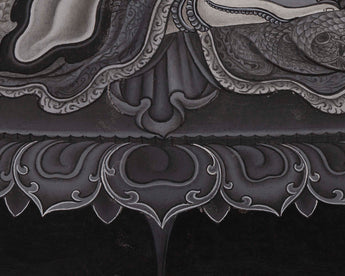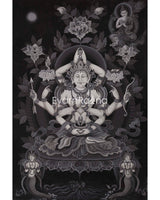
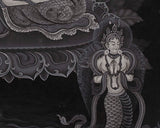
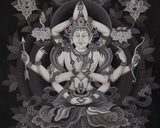
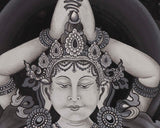
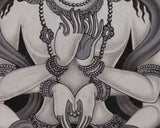


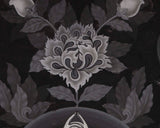
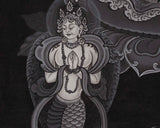
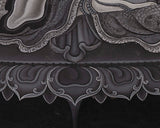
Manjushree Namsangiti Thagnka | Buddhist Art

100% AUTHENTIC

FREE SHIPPING
Manjushree Namsangiti Thagnka
Introduction To The Thangka Print :
“God of Divine Wisdom “, whose worship confers mastery of the dharma, retentive memory, mental perfection, and eloquence. In Mahayana Buddhist Tradition he is regarded as having supreme wisdom among bodhisattvas. He is also called the prince of the Dharma because of his eloquent wisdom.
Manjushree has the ability to see the nature of reality as it is. In Nepal, he is considered the founder of the Nepalese civilization and the creator of the Kathmandu Valley. It is said that he cut the gorge of Chobhar hill with his flaming sword “ Chandrahasa” and let the waters flow out and thereby opening the valley for the human habitant to allow for the propagation of the Buddha Dharma.
He carries the sword of wisdom in his right hand and Prajna Paramita Manuscript on his left on top of the lotus blossom. It is believed that worshipping Manjushree can confer upon the worshippers' wisdom, memory, intelligence, etc.
How does Thangka benefit us?
It goes without saying that every detail of a painting has a symbolic meaning. Regardless of your religious affiliation, a thangka can help you on your path to enlightenment, whether you practice Buddhism or have other religious convictions. Thangkas are paintings that depict deities with various iconographic elements and symbolism that encourage meditation on the teachings of the god they depict. Any thangka is intended to aid in the removal of the film of ignorance, which is a significant barrier to the road to enlightenment. The Thangka is revered as a holy item. They promote positivity, spread Buddhism's teachings, bring about peace, harmony, and oneness, and dispel any negative energy that may be there.


